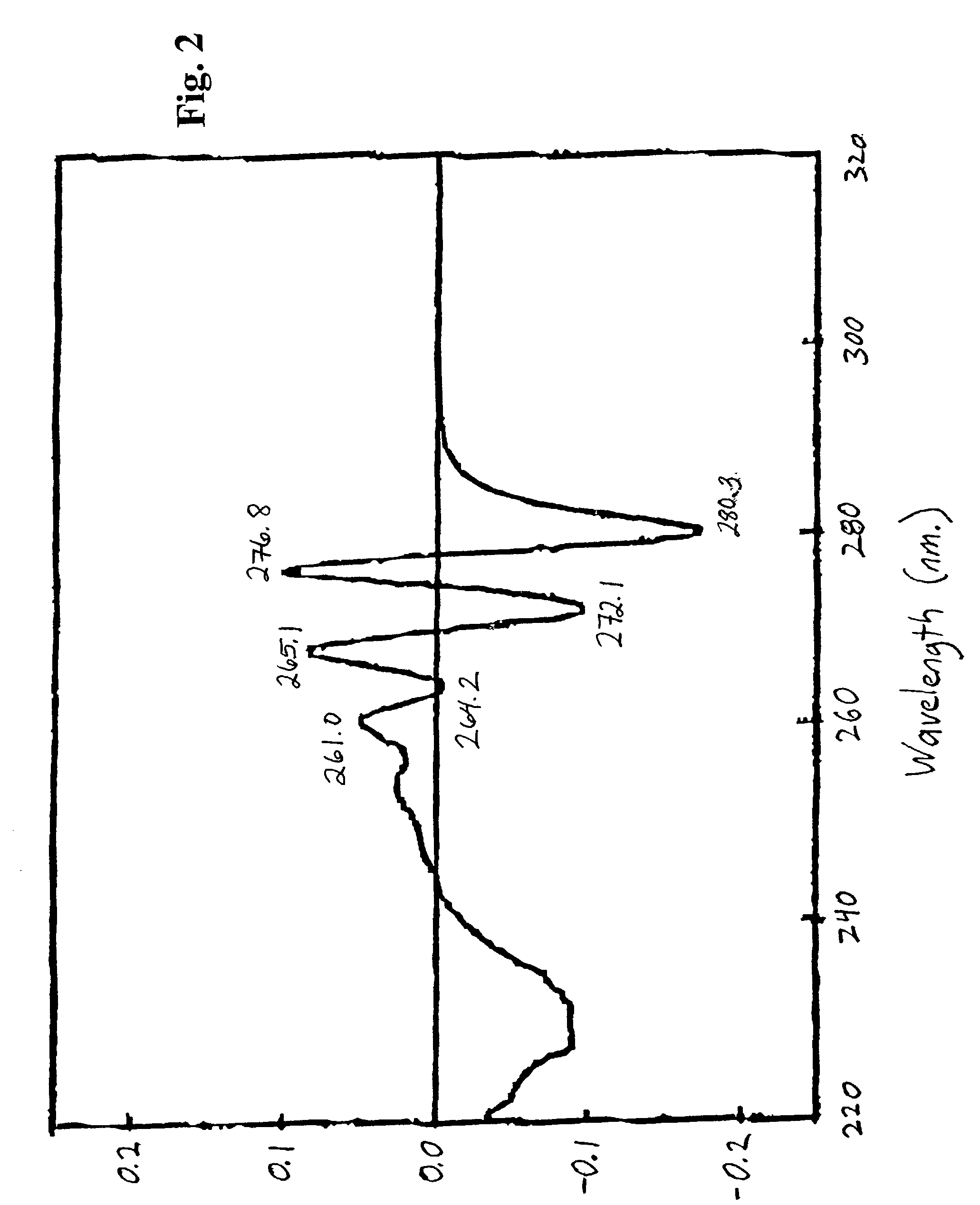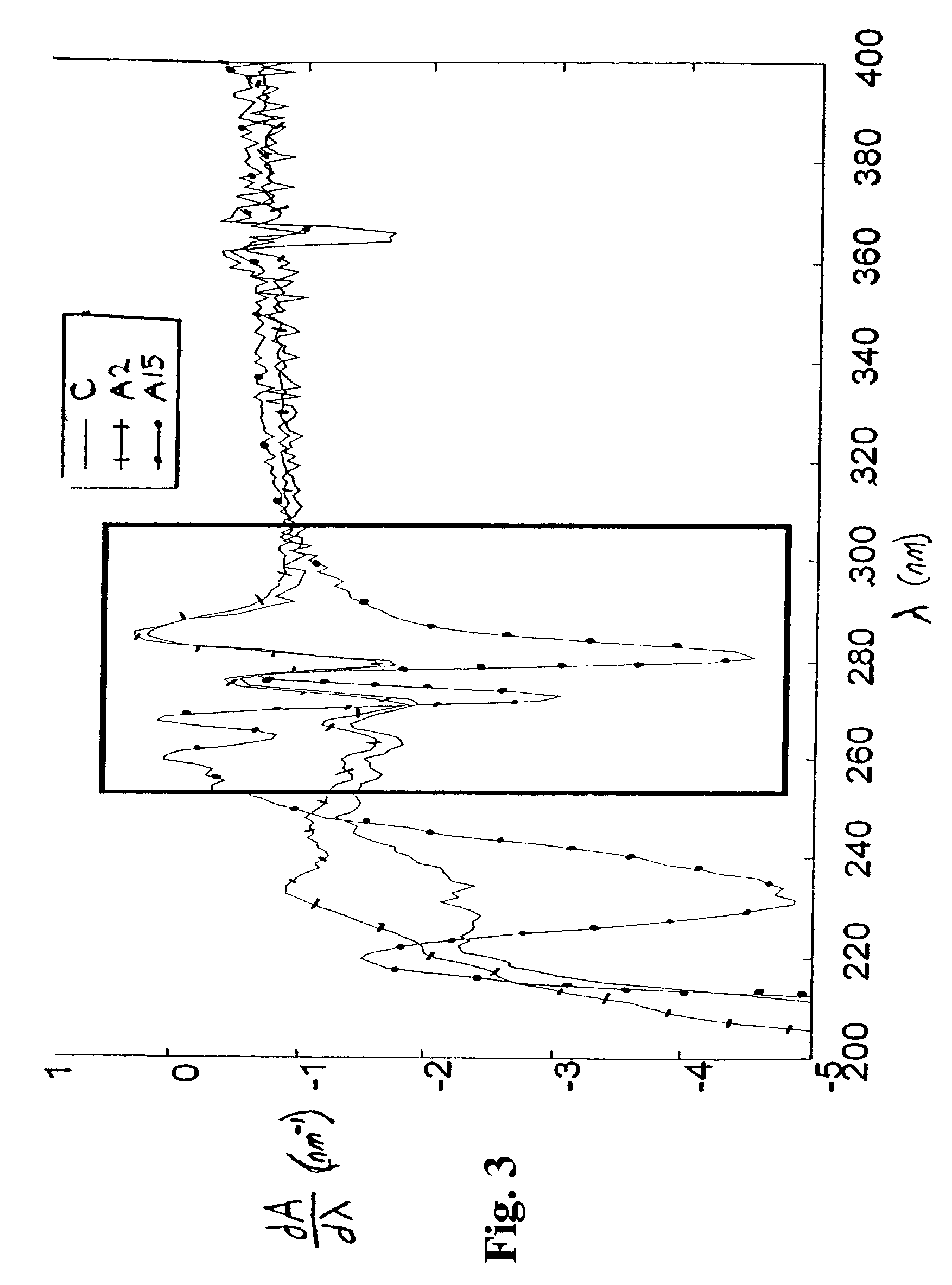Kits and methods for determining the effectiveness of sterilization of disinfection processes
- Summary
- Abstract
- Description
- Claims
- Application Information
AI Technical Summary
Benefits of technology
Problems solved by technology
Method used
Image
Examples
example 1
[0084]Duplicates of three (3) biological indicators (BIs) of the invention were designated “C”, “A2”, and “A15.” Each was a 20 milliliter borosilicate glass scintillation vial containing 106 air-dried spores of Bacillus subtilus. The vials were subjected to a moist heat sterilization process by autoclave (15 p.s.i.g. steam, 121° C.), as follows:
[0085]
Biological IndicatorDuration of(BI)Sterilization ProcessC 0 minutesA2 2 minutesA1515 minutesA3030 minutes
The release of DPA of the spores of each BI was determined as follows. The vials were removed from the autoclave, allowed to cool to approximately room temperature, and 10 milliliters of deionized, distilled water was added to each vial. The vials were vortexed and subsequently sonicated for one minute to suspend the spore debris and to dissolve any released DPA.
[0086]The absorbance of each suspension was then assessed using standard quartz cuvettes, by scanning photospectrometry, performed at wavelengths including about 200–400 nano...
example 2
[0090]Four biological indicators (BIs) of the invention, designated “C”, “EC”, “E”, and “P” were subjected to the following sterilization process:
[0091](i) BI “C” was not subjected to any sterilization process;
[0092](ii) BI “EC” was treated by applying a mixture of ethylene oxide (90%) and CFH (10%) for 130 minutes in a model 2047 90 / 10 OXYFUME® sterilizer (Vacudyne, Inc., Chicago Heights, Ill., U.S.A.);
[0093](iii) BI “E” was treated by application of pure ethylene oxide for sixty-two minutes in a model 300 3M® sterilizer (3M, St. Paul, Minn., U.S.A.); and
[0094](iv) BI “P” was treated by application of hydrogen peroxide plasma (45–59.5% H2O2, balance water vapor (STERRAD®) for about thirteen minutes.
[0095]A first derivative spectrum obtained by DUVS analysis is shown in FIG. 5.
[0096]Each BI was a glass vial containing 108 spores of B. subtilis. Viability assessments done by standard procedures (plate counts) showed that for each BI, the survival of the spores was about 0.3×107 (abou...
example 3
[0097]Four BIs were prepared by adsorbing about 108 spores onto one surface of NALGENE® model 195–2520 syringe filter membranes (25 millimeters in diameter; pore size 0.2 micrometer; nylon membrane), or NALGENE® model 190-2520 syringe filter membranes (25 millimeters in diameter; pore size 0.2 micrometer; cellulose acetate membrane, air dried under sterile conditions for 24 hours). Membranes sold under the trademark NALGENE are available from Nalge Nunc, Intl., Rochester, N.Y., U.S.A.
[0098]Each of the BIs, designated “C”, “EC”, “E” or “P” was subjected to a different sterilization treatment:
[0099](i) BI “C” was not subjected to any treatment,
[0100](ii) BI “EC” was treated by application of a mixture of 90% ethylene oxide and 10% CFH for a period of 130 minutes,
[0101](iii) BI “E” was treated by application of pure ethylene oxide for a period of 62 minutes, and
[0102](iv) BI “P” was treated by application of hydrogen peroxide plasma (STERRAD®) for an exposure period of 13 minutes and 1...
PUM
 Login to View More
Login to View More Abstract
Description
Claims
Application Information
 Login to View More
Login to View More - R&D
- Intellectual Property
- Life Sciences
- Materials
- Tech Scout
- Unparalleled Data Quality
- Higher Quality Content
- 60% Fewer Hallucinations
Browse by: Latest US Patents, China's latest patents, Technical Efficacy Thesaurus, Application Domain, Technology Topic, Popular Technical Reports.
© 2025 PatSnap. All rights reserved.Legal|Privacy policy|Modern Slavery Act Transparency Statement|Sitemap|About US| Contact US: help@patsnap.com



